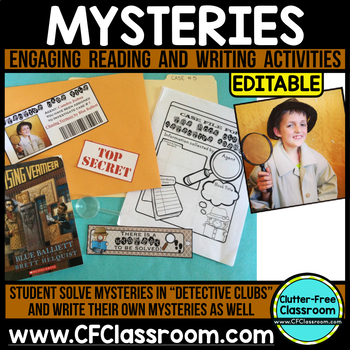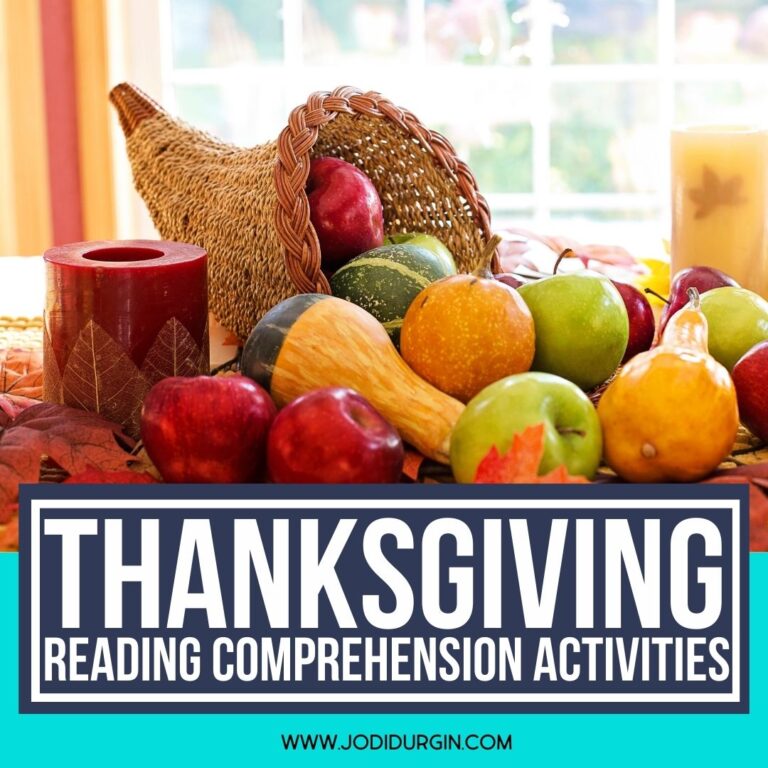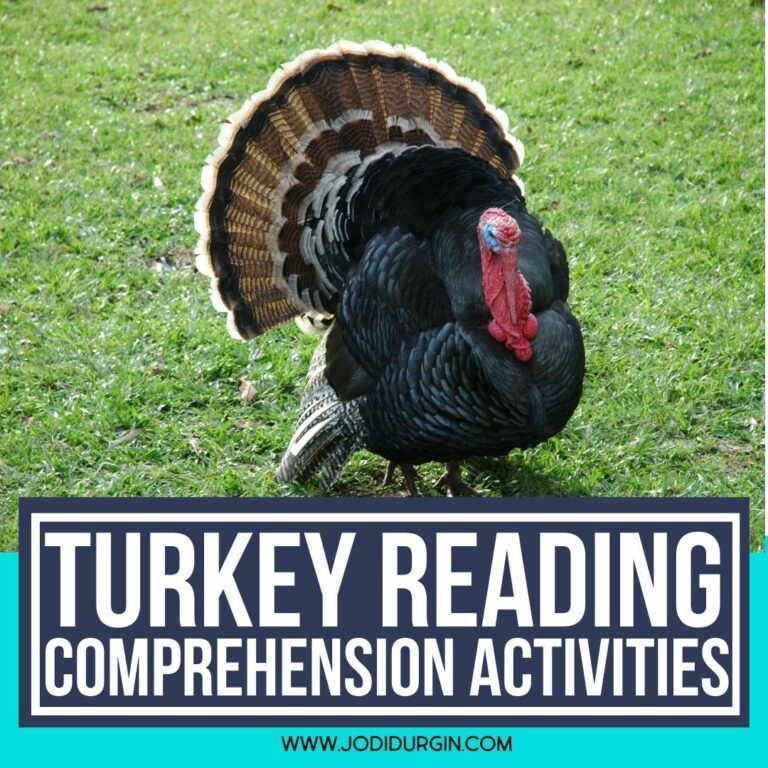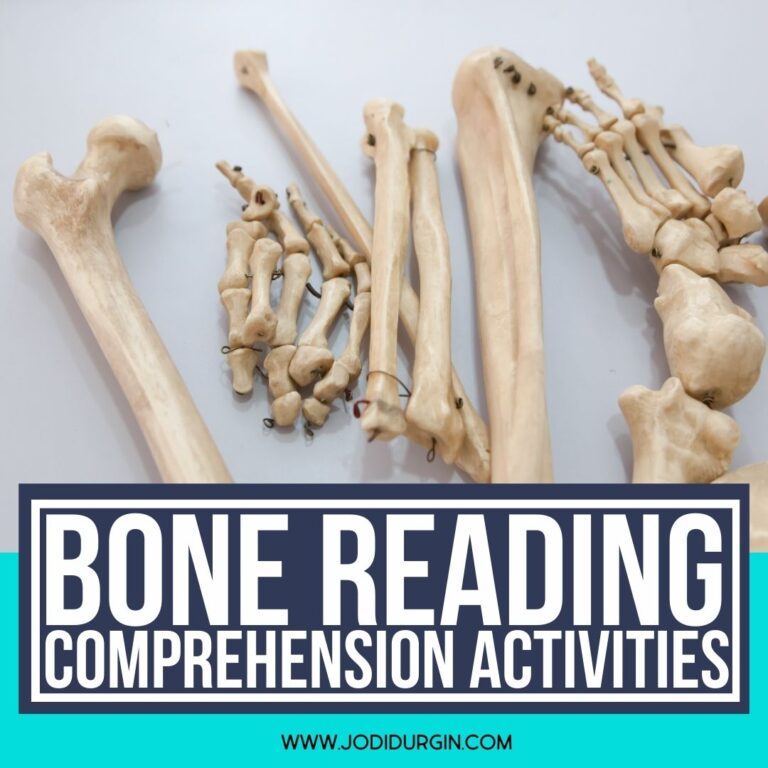Elementary literature circles are a fun, collaborative learning experience for 3rd, 4th, and 5th grade students to participate in. This blog post will dive into all things literature circles: What they are, why you should do them, how to implement them, and much more. You will have what you need to begin implementing them in your classroom.
This blog post will answer the following questions about elementary literature circles in the classroom:
- What is a literature circle?
- What are the benefits of implementing literature circles in an elementary classroom?
- How do you implement literature circles in the classroom?
- What are the different literature circle jobs and roles at the elementary level?
- How do I set up behavioral expectations for elementary literature circles?
- What are some strategies for encouraging meaningful discussions in my literature circles?
- How do I hold students accountable during literature circles?
- What are some tips for making elementary literature circles more successful in my classroom?
- How do I implement literature circles in my classroom?
- What is the difference between literature circles and student book clubs?
- Are literature circles and guided reading the same thing?
- What are some potential obstacles of literature circles and how can they be avoided?
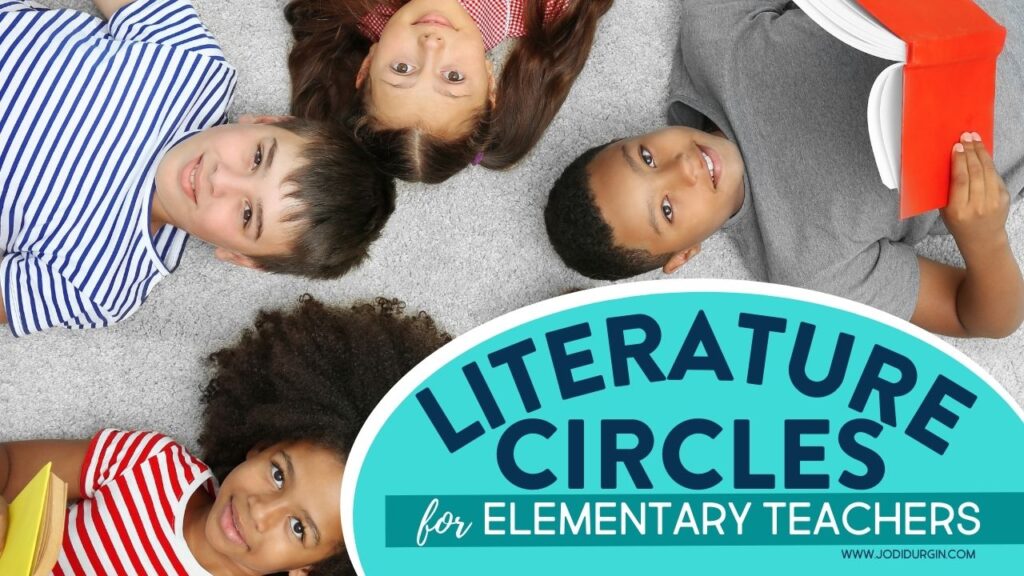
What is a Literature Circle?
A literature circle is part of a balanced literacy program where a small group of students meet to have an in-depth discussion about a text they are currently reading. These weekly meetings are primarily student-led, with students responding to the text and other readers critically. During these meetings, the teacher acts as the facilitator, helping to guide discussions as needed only.
What are the Benefits of Literature Circles in Elementary Classrooms?
During elementary literature circles, students can engage in critical thinking and reflection as they read. They can be differentiated according to students’ interests and reading levels. They can also be free-flowing, or students can practice the skills they are learning in class which allows for endless learning opportunities. Each group of students gets what they need specifically, so no two groups will end up being the same. Additionally, teachers can use flexible groupings of students as their needs change throughout the year! This works incredibly well if the whole class is reading the same book.
How do you Implement Literature Circles in the Classroom?
Before you begin your elementary literature circles, evaluate your students’ current reading abilities to identify their strengths and weaknesses. In addition to looking at their academic needs, it’s important to consider personality, work habits, and peer relationships. Utilize running records and classroom observations as tools to collect data and determine how to group your students. Use all of this information to group your students.
Follow these steps to implement elementary literature circles in your classroom easily and quickly:
Day 1: Introduce
- Books: Either choose one book the whole class will read or choose a book for each group. Students could also select a book for their group by voting on a choice of two or three books you pick.
- Roles/Jobs: Your students can choose their roles within their group, or the teacher can assign them. I know that my students always like a choice when appropriate. Choose a team leader for each group to be in charge of problem-solving around choosing roles. Please see the detailed list below about each role during a literature circle.
- Rules and expectations: Discuss the expectations for your elementary literature circles with students. The teacher can decide on the rules most important for their set of students, but here are some ideas:
- Only one person can talk at a time.
- Respond at least once during each meeting.
- Come to the meeting prepared. All assignments for their role are completed. They have their paper, pencil, and book ready to go before the meeting begins.
- No reading ahead. Students must all read the same pages each week.
- Raise your hand to share during the literature circle.
Day 2 and 3: Review
- Review and model the rules as a whole class and in small groups.
- Review the roles in small groups as other students begin reading the assigned pages of their book. The teacher can pull small groups based on the role/job each child has. For example, pull all the Word Wizards and review how to use the dictionary to look up unknown words.
- Show activity sheets for each role. Some teachers prefer to have a worksheet that corresponds to each position in the literature circle, but these are unnecessary. It is helpful when just beginning, but students become more self-sufficient as the year goes on.
Day 4: Literature Circle Meeting Day
- Review expectations: It is vital to review your expectations before allowing students to meet for their literature circle, especially when just beginning to explore this approach to reading instruction. You could call up a few students to model their roles just before the meetings start so students can get immediate feedback and clearly understand what you expect.
- Literature circle meeting: Students meet with group members to discuss their books. Your students should follow all the expectations you have set during the week, and you should be facilitating as needed. By this time, all students should clearly understand the book, express their ideas, and build on others’ statements during the discussion. This is an excellent time for you to take notes about each student’s progress over the year. You will gain an understanding of how well students understand the texts they read.
What are Roles Assigned in Literature Circles? What are those Individuals Responsible For?
Below is a list of literature circle roles (also called literature circle jobs) that can be used at the elementary level, so they run smoothly and all students are engaged, thinking critically, and sharing with the group.
- The Discussion Director: This student is responsible for keeping all members on time and on track during the book meeting. They are responsible for ensuring everyone in the group has a chance to respond. If a student is shy, the discussion director will solicit a response from them.
- The Connector: This student is responsible for sharing any connections that they make while reading the assigned pages. They share connections with themselves, the text, other texts, or the world with the group and respond to others’ responses appropriately.
- The Illustrator: This student is in charge of drawing an illustration of a main event from the text. The illustrator explains the event in detail and why it was important to the reader.
- The Questioner: This student is in charge of noting any questions or wonderings they had while reading. The questioner will share these questions aloud, and the other group members will respond, leading to some thoughtful discussion.
- The Predictor: This student is responsible for making and sharing predictions about the text as they read. This would also be a good role for each child in the group. All group members could share their predictions about what will happen next at the end of the meeting.
- The Summarizer: This student will be in charge of summarizing the week’s reading to the group. They will share aloud, and other students can respond by adjusting the summary if necessary.
- The Word Wizard: This student is responsible for writing down any new or challenging words as they read. They will then use context clues and a dictionary to record each word’s meanings. These words with definitions will be shared with the literature circle during their meeting at the end of the week.
How to Set Behavioral Expectations for Literature Circles
When you are launching your elementary literature circles, be sure to be very clear about the behavioral and academic expectations during literature circles. Students will be working independently throughout the week in preparation for their meetings at the end of the week. It is important to remember to practice and model each expectation multiple times throughout the first week. In the following weeks, you will still need to restate the expectations before beginning so that every student understands what is expected and can be successful. You will also need to monitor and facilitate as needed throughout the process until students get the hang of the routine and the type of deep thinking you are looking for.
How to Encourage Meaningful Discussion in Literature Circles
First, make sure to model the expectations for meaningful discussions as explained above. It is important to remember that students, especially those in younger grades, do not know how to have academic conversations. Having assigned roles and students prepared when coming to the meeting later in the week helps students sort through their reading reflections about the text they are reading, helping them feel confident and prepared to go into the discussion.
Remember the main goals for elementary literature circles are:
- Communicate
- Create
- Critically Think
- Collaborate
Explain these goals and their meanings to students. During the literature circle meetings, you will want to walk around and help guide any struggling students and help them modify how they ask, respond, and state their thinking. Providing students with sentence stems for these types of discussions is extremely helpful until they get the hang of communication that shows their peers’ critical thinking.
How to Hold Students Accountable during Literature Circles
Students need to be held accountable for their roles and responsibilities during literature circles. Assigning each member’s roles is one way to ensure everyone does their part and there is a conversation that shows deep thinking. However, many times there will be a student or two who struggle to stay engaged because it is too hard or uninteresting. Make sure they have some incentive for them to try their best at all times. Using classroom management strategies like a reward system helps here. As the teacher, you can always stand near anyone who may be struggling, so you are nearby when and if they need help remembering the expectations.
5 Tips for Making Literature Circles More Successful in your Classroom
Here are 5 tips for making your elementary literature circles more successful:
- Explicitly teach the expectations.
- Model and practice the expectations.
- Choose engaging books you know your students will like. Listen to them and have them give recommendations of novels they will read.
- In the first several weeks of starting literature circles, pull small groups of students doing common roles for the week. Do this while other students are reading their books on days 2-3. This allows you to teach specific skills required for each of the roles in literature circles.
- Remember, your role is the facilitator. You are there to help guide IF NEEDED. Try just to listen.
How to Implement Virtual Literature Circles
The whole process, as explained above, translates well to virtual learning! All that students need is the text for their group and any recording sheets you want them to use to be prepared for their role in their literature circle. For the meetings, you can use breakout rooms and go from room to room to observe!
What is the Difference Between Literature Circles and Student Book Clubs?
The difference between book clubs and literature circles may not be that obvious to all teachers. Elementary literature circles are more structured and geared toward thoughtful discussion and critical thinking. Book clubs are more relaxed and very much student-driven. Students would base groupings on the book they’d like to read and discuss informally in book clubs.
Literature Circles vs Guided Reading
Guided reading and literature circles are different because one is more teacher-led, and one is more student-led. Guided reading is skills-focused and data-driven. The lessons are taught in small groups or with individual students. The teacher leads these lessons. Elementary literature circles are collaborative and geared towards critical thinking. All students are meeting with their small group at the same time while the teacher helps the discussion as needed.
What are Some Obstacles of Literature Circles? How can they be Avoided?
When planning and implementing elementary literature circles, you could face some obstacles. In an ideal world, all of the students participating in a literature circle meeting will be engaged, actively listening, and enthusiastically participating. As teachers, we know that this does not often happen organically. Some students may struggle to do this due to inattention, lack of motivation, or forgetting the expectations. In order to anticipate and prepare for this, it’s important to explicitly teach expectations at the beginning of the school year, post them in the classroom, and refer to them as needed.
Students who are working towards being independent learners may need additional support to reach their highest potential. Partnering these students’ with models and having regular check ins with them will help these students be active participants in the literature circle meetings.
Another common concern with literature circles is that students will learn to read with blinders because they focus on their specific role in the group that they miss out on the rest of the text’s big ideas. Consider switching your students’ roles each week or having them read the pages once through without knowing their part for the week to avoid this.
Elementary Literature Circle Activities and Resources
Mystery Unit for Literature Circles
This mystery unit is so engaging that when we did it in my classroom during the last week of school (while the kids all had summer vacation on their mind) they all came in excited to read with their detective clubs and were happily writing right up until the last day of school. No joke. I’ve never seen kids so motivated to learn that late in the school year.

